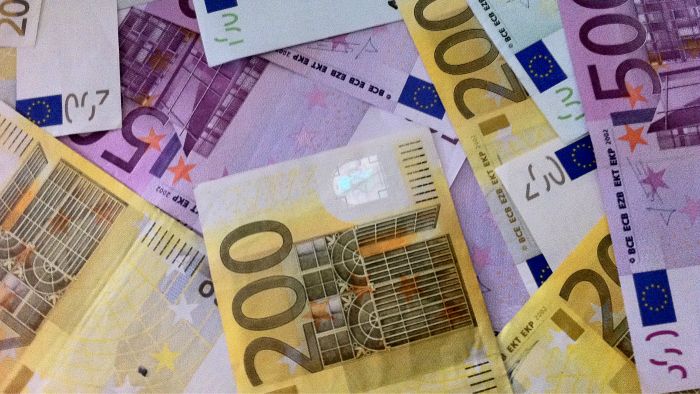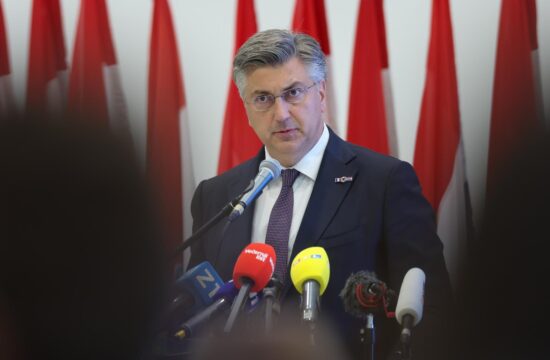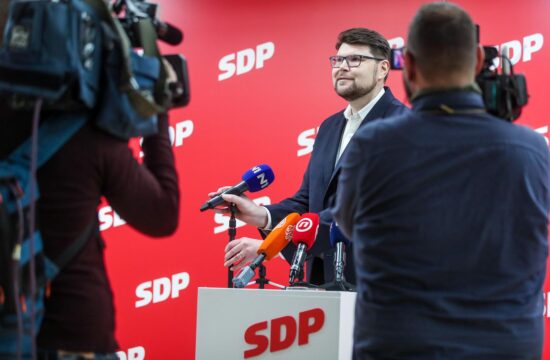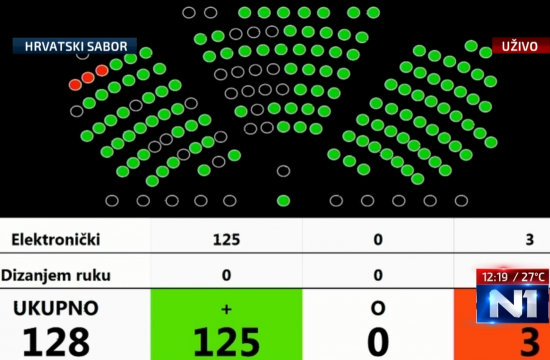
Croatian government adopted the 49 billion kuna (€6.5 billion) Draft National Recovery and Resilience Plan 2021-27, which the country will send to the European Commission for "final harmonization," state agency Hina reported on Thursday.
The document, which has more than 1,100 pages, contains descriptions of 77 reforms and 152 investments that the government plans to spend EU funding.
Hina reported that the projects are grouped into five “components” and one “initiative”: the so-called “business sector,” with investments amounting to 26.2 billion kuna or 54 percent of the total amount; public administration, justice and state-owned property (4.36 billion kuna or 10 percent); education, science and research (7.5 billion kuna or 15 percent); labour market and social welfare (2.09 billion kuna or 4 percent); health care (2.56 billion or 5 percent); and the so-called “initiative” titled “Reconstruction of buildings”, with planned investments amounting to 5.95 billion kuna or 12 percent of the total funding.
Hina reported that 66 percent of the entire program – or 32.15 billion kuna – is earmarked for recovery, while 34 percent (16.5 billion kuna) is intended for “resilience.”
PM Andrej Plenkovic said the plan is a key document that “will enable us to use, in the next five years, more than 47 billion kuna for structural reforms and investments that will contribute to our economic recovery and make us more resilient to future crises.”
“If necessary, by the end of 2023 Croatia will also be able to seek loans in the amount of around €3.6 billion or 27 billion,” he said.
Each component has ‘digital’ and ‘green’ elements, the goal being to reach the target of 20 percent of investments directed into “digital transformation” and 37 percent of investment into “green transition,” Hina reported.
Macroeconomic effects
According to government projections, the plan is expected to contribute to a real GDP growth in 2021 of 5.2 percent (instead of 4.9 percent without plan), in 2022 the GDP would increase by 6.6 percent (instead of 5.2 percent), and in 2023 it would be 4.1 percent (instead of 2.7 percent). In 2024 the plan would help Croatia achieve 3.4 percent GDP growth (instead of 2.5 percent), and in 2025 about 2.7 percent (instead of 2.5 percent).
The government expects the plan to cumulatively increase GDP by 4.2 percent in 2025 compared to 2020. In the last year of its implementation, 2026, the plan will have resulted in GDP totalling nearly 17 billion kuna larger than without the plan.
Concrete examples of NPOO implementation
PM Plenkovic said that the implementation of the NPOO would make it possible to achieve the European target share of renewables in energy consumption (for Croatia the target is set at 36.6 percent) and achieving the European target of at least 14 percent of renewables in the transport sector until 2026. Investments in water management are planned as well, to make drinking water available to around 93 percent of the country’s population.
The plan also envisages better coverage with broadband infrastructure, access to fast internet for the public as well as businesses, and the reduction of backlogs in lower level courts by at least 5 percent by mid-2026. The plan should also result in an increase in the share of children aged between 4 and school age who are covered by early preschool education, from 81 percent to 96 percent, which is the EU-set target.
Also envisaged are investments to create “as many jobs as possible for the sake of increasing the employment rate from 66.7 percent to 70 percent by the end of 2024,” Hina reported. “Labour market reforms and policies will help provide conditions to create at least 100,000 new jobs, with emphasis on people under 30 and the self-employed,” said Plenkovic.
Investment of 2.5 billion kuna in the health system is aimed, among other things, at raising the survival rate for cancer patients from 46 percent to 51 percent, which would translate to saving around 5,000 lives. Also planned is the “continuation of the functional integration of hospitals.”
Reconstruction effort for areas hit by quakes in 2020 accounts for 12 percent of the funds expected to be granted for the plan, while the projected energy consumption for heating is expected to be reduced by at least 50 percent for buildings renovated as part of the plan.
Plenkovic said that in the next ten years, and “mostly in the first five,” Croatia would have at its disposal close to €30 billion from EU funds.
“This amount is a unique opportunity to contribute to modernization and growth of the business sector and Croatia’s social – and even – development,” he said.





Kakvo je tvoje mišljenje o ovome?
Budi prvi koji će ostaviti komentar!